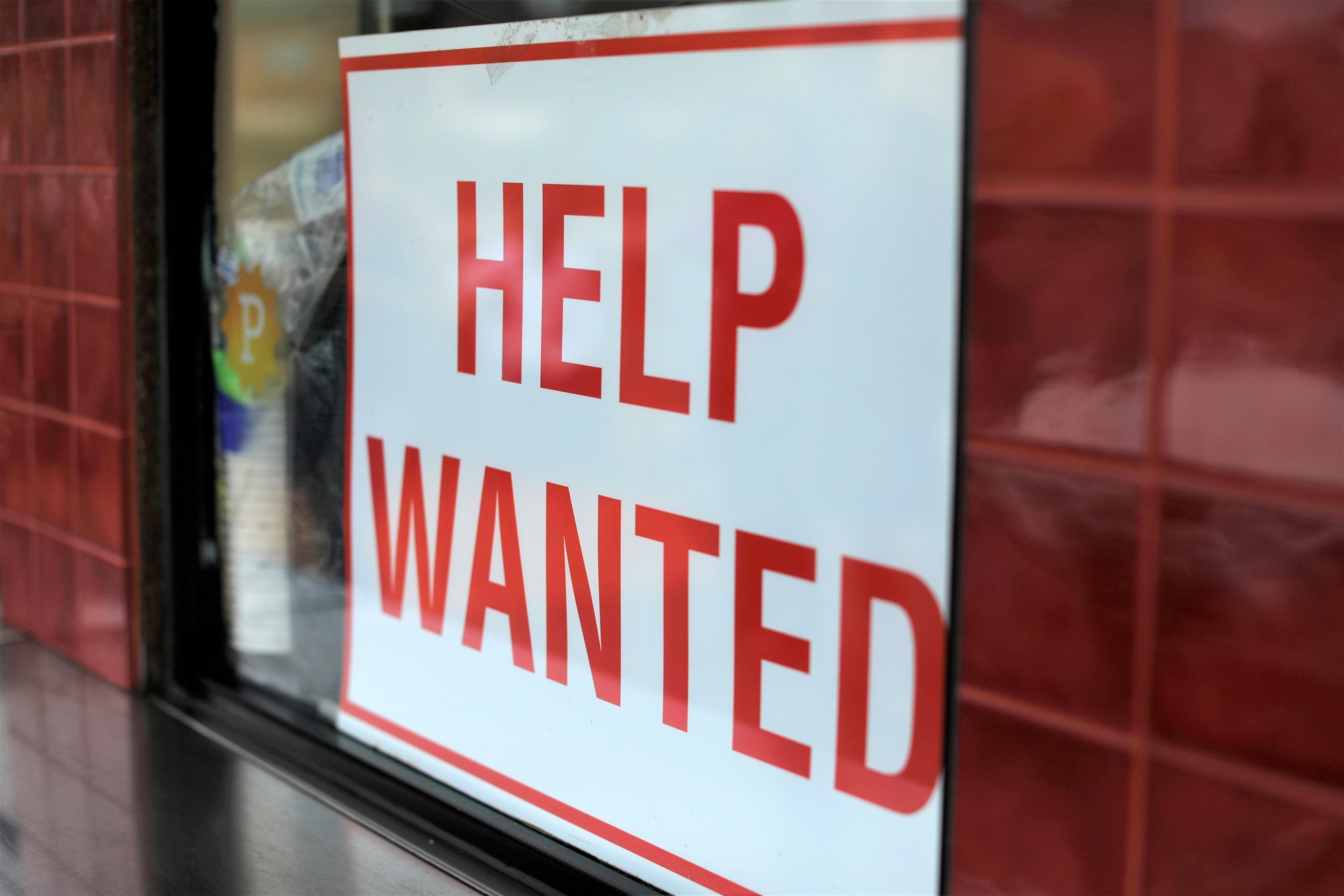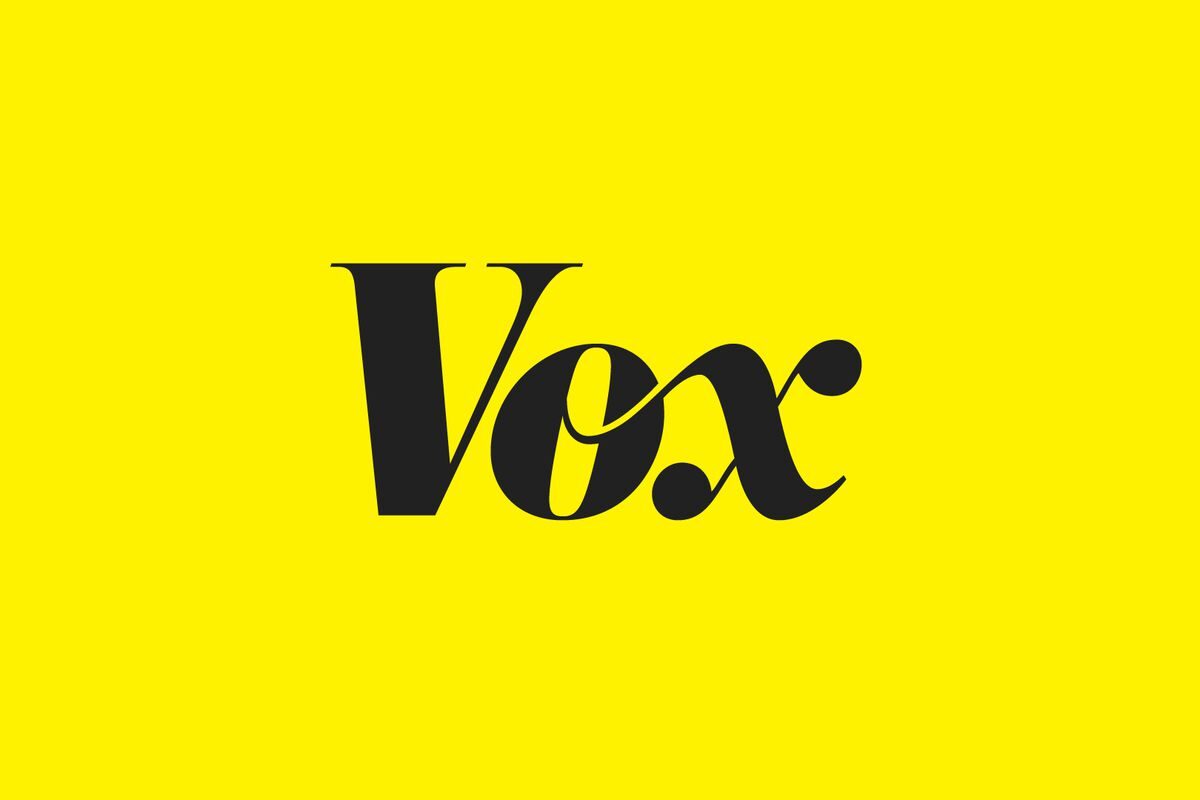July 15, 2021
The Great American Jobs Reshuffle
Findings from the June 2021 American Perspectives Survey

March 13, 2020, may go down as a key inflection point in American economic history. The COVID-19 pandemic shuttered countless businesses, brought economies to a halt, and has killed more than 600,000 Americans and over four million people worldwide as of early summer 2021.[1] Real gross domestic product fell by over 30 percent in the second quarter of 2020. The service-providing sector, which accounts for over 78 percent of the American workforce, contains many of the sectors that have been hit hardest.[2] Whether businesses shuttered temporarily due to health concerns or folded completely, millions of Americans, many of whom had never been unemployed before, found themselves without work or the prospect of finding work.
Federal and state governments responded to this crisis with unprecedented efforts to try to ensure that American families had resources to survive and that the US economy had the aggregate demand required to prevent a full-scale collapse. Over the past year, the US government has spent $764 billion on unemployment compensation benefits, $968 billion on payroll subsidies to struggling firms, and $867 billion in stimulus payments to individuals and families.[3] Businesses responded to the pandemic threat by shifting quickly to remote-working arrangements to protect workers and comply with government stay-at-home orders. At least temporarily, COVID-19 has changed the rules about how Americans work and what happens to them and their government benefits, such as unemployment compensation, when they lose their jobs.
As highly effective vaccines and declining infection rates have taken hold, a tentative new normal is emerging. Fueled by over a year of pent-up consumer demand, factories are ramping up production, and once-shuttered stores, businesses, and service and hospitality firms are reopening. This national economic restart, and a backlog of consumer demand, has generated enormous demand for workers. In its most recent US Department of Labor Job Opportunities and Labor Turnover Summary report, the federal government reported a record-breaking 9.2 million open positions, theoretically approaching enough jobs to provide employment for the over 9.5 million Americans who are currently looking for work.[4]
Given this context, it has come as an additional shock to the patterns of American working life that the unemployed have been slow to return to jobs. After a robust March labor report showing 916,000 new jobs created, subsequent reports have been disappointing, with the economy averaging about 560,000 over the past three months.[5] Media coverage of the job market has focused on the difficulties employers are having persuading workers even to apply for work. The act of “ghosting,” whereby would-be employees accept a job and then fail to show up on the first day, has occurred more frequently. Even unprecedented signing bonuses have failed to attract workers, further frustrating both employment growth and business owners.[6]
Numerous explanations for post-pandemic work hesitancy have been posited, such as healthier savings accounts boosted by federal stimulus checks, lingering fear of contracting coronavirus, and increased family demands. One of the most prominently discussed potential reasons for the slow return to work has been unemployment insurance (UI) benefits. Business owners and some economists have argued that when Congress and the Donald Trump and Joe Biden administrations boosted unemployment compensation (first by $600 last spring and then to $300 in December 2020), the effect was to pay people more through unemployment benefits than they could earn at work, thus creating a disincentive for job seeking.[7] While evidence is mixed on the degree of the disincentive effect of increased UI benefits, most agree that the disincentive is real and operates with other factors that continue to discourage work in the post-pandemic environment.[8]
The June American Perspectives Survey of 2,422 American adults, including an oversample of 406 people who are currently unemployed, lends new insights about what Americans think about work, the job market, and their employment experiences during the pandemic. It also looks at how much they are actively seeking work and, if they are not seeking work, why.
Among the jobless, two subgroups emerge: those who were unemployed before the pandemic and those who were not.[9] Nearly half (47 percent) have been unemployed for two years or more. These Americans were not working before COVID-19 and thus, their employment situation shouldn’t be viewed as a product of pandemic stay-at-home orders or business closures. Consistent with other research findings, the chronically unemployed are most likely to say they are not working because they either have a disability preventing them from retaining work or are caring for family members.[10] A majority (68 percent) of chronically unemployed workers are not planning to seek a job in the next six months, placing them outside the labor force entirely. However, some chronically unemployed workers are interested in returning to work, and many are interested in workplace flexibility. A majority (74 percent) of the chronically unemployed say that being able to work remotely when they want is an important factor when choosing a job. However, some have already adapted to create their own flexible workplaces. About one-third (35 percent) of Americans who have been unemployed for more than two years report they do something extra to earn money that is not their household’s primary source of income.
The experience is different for the half of the currently unemployed who became unemployed during or shortly before COVID-19. While under normal conditions, the median unemployment duration is just over nine weeks, COVID-19 prolonged the average time horizon to 20 weeks.[11] Some workers lost their jobs or had their hours cut due to the economic slowdown from the pandemic. Sixteen percent left work to take care of family members. Regardless of their reason for currently being out of work, they are mostly interested in returning. A resounding majority (75 percent) are currently looking or plan to look for work over the next six months.
These new, pandemic-era unemployed are disproportionately younger, are lower income, and have lower educational attainment than the general public does. Black and Hispanic respondents represent a disproportionate number of the pandemic unemployed—those who have been out of work for the past two years. Black and Hispanic Americans make up 22 and 24 percent of the pandemic unemployed, respectively, but just 12 and 16 percent of the general population, respectively.
The pandemic flipped the ratio of long- to short-term unemployed on its head. In January 2020, about only 20 percent of the unemployed population were without jobs for more than six months.[12] Today, 80 percent of the current unemployed population has been unemployed for longer than six months. What appeared initially as frictional unemployment now looks a good deal like conditions typically seen in structural unemployment.[13]
Now that the labor market is rebounding and help wanted signs are appearing at businesses that were once shuttered, the unemployment long haul has inevitably reshuffled financial needs, work aspirations, and the very nature of work. Workers are looking at a new set of cards and preferences.
Obstacles to Returning
How the unemployed play their cards depends on many different factors, including family obligations, financial needs, and life aspirations. These factors also vary dramatically among the public. Among women, nearly one in three (30 percent) are not currently working because they are caring for children and family members. This figure rises to 42 percent among women between age 30 and 49. This has led to startling declines in labor force participation among women.[14] Caring responsibilities also affect the jobs they can work. Thirty-nine percent of women say flexibility to balance work and family needs is one of the most important factors in choosing a job, and roughly 60 percent (59 percent) prefer a remote-work option.
Some people and groups are using this period of unemployment to improve their skill set. For instance, nearly one in four (23 percent) unemployed Hispanic Americans list enrollment in education as the reason for being out of the workforce. A similar, if less pronounced, pattern holds for those without a bachelor’s degree. For Americans with some college education or an associate degree, nearly one in five (18 percent) are back to school to pursue education and retraining.[15] Roughly one in three (31 percent) unemployed Americans who have at least a bachelor’s degree are holding out for the right job.
Meanwhile, around half of states are trying to speed up these workers by cutting unemployment benefits. This is based on the idea that people are not working because they don’t financially need to—circumstances created by enhanced UI.[16] Yet, only 5 percent of unemployed people say they aren’t going back to work because they don’t need the money.
The unemployed are looking for work. However, they are not necessarily looking for the same jobs they had a year ago. Workers are looking for jobs within new safety, skill, and caretaking constraints that are proving slow to change. There’s a new deck, deal, and game, and most of the unemployed are trying to get a seat at the right table for them.
The Unemployment Picture
Most Americans who are currently unemployed have been in that position for a considerable time. Nearly half (47 percent) say they have been out of the workforce for at least two years. Twenty percent report being out of work for at least one year, but less than two. Close to one-third (30 percent) of those who are unemployed have been out of work for less than one year.
The most common reason given for being out of the workforce has to do with personal health. About one in four (24 percent) Americans who aren’t working say they have a personal health condition or disability that prevents them from working. Another 20 percent cite family responsibilities as the reason they are not currently employed. Thirteen percent say they have been unable to find the right job or position, while roughly as many (12 percent) report that they are pursuing educational or additional training opportunities. Only 8 percent of unemployed Americans cite concerns about COVID-19 as the primary reason for their work status, but this rises to nearly one in five (18 percent) among those out of work for more than a year but less than two years. Six percent of unemployed Americans say they are taking time off to review their personal priorities, and 5 percent report that they do not need the income right now.
The reasons Americans are currently not working vary considerably by educational background (Figure 1). Unemployed Americans with a four-year college degree are much more likely than those without to cite family obligations (30 percent vs. 19 percent). The college-educated unemployed are three times more likely to say they aren’t working because they can’t find the right job opportunity (31 percent vs. 10 percent). Conversely, unemployed Americans without a four-year degree are five times more likely to cite personal health problems or a disability as the reason they are not working (27 percent vs. 5 percent).
There are a few notable differences between men and women as well. Unemployed women are nearly four times more likely than men are to cite family responsibilities as the primary reason they are not currently working (30 percent vs. 8 percent). Among Americans who are mid-career age (age 30–49), the gap is even wider: 42 percent of women, compared to 14 percent of men, say they are not working because they have family obligations.
Most Important Financial Problem
American households have a wide array of financial challenges, with no single problem standing out (Figure 2). Fifteen percent of Americans say cost of living is their most significant financial challenge. An equal number (15 percent) report that credit card or education debt is their most serious financial hurdle. Fourteen percent cite health care costs as their greatest concern. Thirteen percent say the cost of owning or renting a home is their number one financial problem. Roughly one in 10 Americans say lack of savings (11 percent) and lack of money or low wages (11 percent). Only 5 percent of Americans say they are facing no financial problems. Only 3 percent of Americans say that a lack of good job opportunities is their most serious concern, while an identical number (3 percent) cite the cost of family care.
Americans who are currently unemployed are far more likely than other Americans are to cite concerns over low wages or lack of financial resources. Twenty-eight percent of Americans who are unemployed say low wages or lack of money are their most serious financial concerns. About half as many (15 percent) say credit card or education debt are their most pressing financial problems. About one in 10 cite the high cost of living (12 percent), the cost of owning or renting a home (10 percent), or the lack of retirement savings (10 percent). Fewer unemployed Americans mentioned health care costs (8 percent) or the lack of good job opportunities (5 percent).
Job Searching and Job Switching
With a record number of job openings, many economists argue that the hiring market is great for job seekers, but this view is not universal. Overall, roughly three-quarters (74 percent) of Americans say it is a good time to find a quality job. But Americans who are not currently employed are far less optimistic in their appraisal of the job situation. Among those who are currently unemployed, about only half (53 percent) say it is a good time to find a quality job, while 46 percent say it is not. Interestingly, retirees are particularly upbeat about the job picture. Eighty-five percent of retirees say that it is a good time to look for a quality job.
Young people (age 18–29) remain more pessimistic about the available job opportunities than older Americans do. Eighty-five percent of seniors (age 65 and older) say it is a good time to find a quality job, a view shared by fewer young adults (61 percent). Young women are especially discouraged. Only 56 percent of young women, compared to 66 percent of young men, say plenty of quality jobs are available.
Similar differences emerge in perceptions about local employment opportunities. Overall, nearly eight in 10 (78 percent) Americans say plenty of jobs are available in their community. But only 51 percent of unemployed Americans agree. Roughly as many (48 percent) of those who are unemployed say jobs are difficult to find where they live.
If Americans are generally upbeat about the availability of jobs where they live, they are somewhat less so about the number of “good” jobs available. Sixty-six percent of Americans say good jobs are available in their community; one in three (33 percent) say good jobs are difficult to find where they live. Less than half (44 percent) of Americans who are unemployed say good jobs are easy to find where they live. Notably, unemployed Americans with a four-year college degree are not any more likely than those without one to say plenty of good jobs are available where they live. Again, retirees express the most optimism about the employment picture. Seventy-eight percent of retirees say good job opportunities are available in their community.
There is a good deal of optimism about the overall employment picture that crosses lines of race and ethnicity. More than two-thirds of White (82 percent), Hispanic (72 percent), and Black (68 percent) Americans say plenty of jobs are available in their communities. However, perceptions of local employment conditions vary considerably regarding the availability of “good” jobs (Figure 3). Nearly three-quarters (73 percent) of White Americans and close to two-thirds (65 percent) of Hispanic Americans say plenty of good jobs are available in their community. Less than half (47 percent) of Black Americans agree.
Twenty-seven percent of Americans say they are currently looking for a new job or will be looking for one within the next six months. Perhaps not surprisingly, Americans who are currently unemployed are much more active on the job search. More than half (52 percent) of unemployed Americans say they are currently looking for a new position or will begin the job search soon. Forty-four percent of Americans currently out of work say they are not looking for a job in the near future.
Part-time workers are also quite active. More than four in 10 (43 percent) part-time workers say they are currently looking for a new job or will be beginning a job search shortly. Fewer full-time workers are on the job market. Twenty-nine percent of full-time employees say they are currently looking for a new position or will be doing so within the next six months. Only 16 percent of full-time workers are currently looking for a new job.
There is a stark education divide among unemployed Americans in how active they are in searching for a new position. More than half (51 percent) of unemployed Americans with a four-year college degree report that they are currently seeking employment opportunities, compared to 31 percent of those without a four-year degree. Close to half (46 percent) of unemployed individuals who lack a four-year degree say they are not currently looking for a job and will not look for a job in the near future, compared to 32 percent of those with a college education.
A modest gender gap is evident as well. Unemployed men are more active in their job searches than unemployed women are, most notably with seeking full-time positions. Twenty-nine percent of unemployed men and 18 percent of unemployed women report that they are currently seeking a full-time job. Thirteen percent of unemployed women and 8 percent of unemployed men say they are looking for part-time work.
How Common Is the Side Hustle?
The vast majority of Americans working in part- or full-time positions have only a single job. Eighty-seven percent of Americans with a full-time position and 80 percent of those working part-time have only a single employer. Twelve percent of Americans have a secondary job in addition to their primary form of employment.
Although few Americans report working multiple jobs, side hustles that bring in additional income are fairly common (Figure 4). Overall, about one in four (26 percent) Americans say they do something extra to earn money that is not their household’s primary source of income. Side hustles are especially common among Americans who are employed part-time (38 percent) and those who are currently unemployed (37 percent). Notably, even one in five (20 percent) Americans who are currently retired report engaging in activities that bring in additional income.
Earning additional income is not isolated to certain types of Americans. These activities are quite prevalent among the public regardless of age, gender, race, ethnicity, or educational background.
Mostly, Americans engaged in side hustles are not interested in turning them into full-blown careers. Nearly three-quarters (74 percent) of Americans involved in earning extra income say they would prefer to keep this as a part-time activity. Twenty-six percent say they would prefer to do it full-time.
The majority (65 percent) of Americans who work part-time consider their situation ideal. Only about one-third (34 percent) of part-time workers say that they would prefer to be working full-time. One explanation for this preference may be the flexibility that part-time work offers. Compared to the general public, part-time workers are more likely to say having flexibility to balance work and family needs is one of the most important factors when choosing a job (48 percent vs. 36 percent).
Few Americans report starting a new business venture. Four percent of Americans report that they themselves or someone in their household started a new business in the past 12 months. Even among those currently working a side hustle, only 13 percent report starting a new business venture.
Career Priorities
Nothing is more important to potential workers in choosing a new job than is flexibility to balance work and family needs (Figure 5). Eighty-six percent of Americans say that workplace flexibility is very important or one of the most important considerations. Nearly three-quarters (74 percent) of the public say being in a welcoming workplace is very important or one of the most important considerations. Close to two-thirds (64 percent) say opportunities for promotion or advancement are very or one of the most important factors in their employment decision-making. A majority of Americans say making a meaningful contribution to society (54 percent), having a job that focuses on helping others (53 percent), having a high-paying job (53 percent), and having a job that others respect and value (52 percent) are very important or one of the most important considerations. Less than one-third (32 percent) of Americans say being able to work remotely when they want is important in whether they’ll take a job.
The values Americans place on various aspects of their work vary quite dramatically along several important fault lines, such as gender, age, political affiliation, and parental status.
Nearly all Americans say that workplace flexibility is at least somewhat important, but for working mothers, it is crucial. Sixty percent of mothers working full-time say workplace flexibility that allows them to take care of family needs is one of the most important considerations for them in taking a new job.[17] Considerably fewer working fathers (43 percent) and working women without children living at home (30 percent) say this is one of the most important considerations.
Regarding earnings, men place a higher value than women do on obtaining high-paying jobs. Fifty-eight percent of men, compared to 49 percent of women, say compensation is a very important or one of the most important considerations. Notably, the gender gap is much more modest among early (age 18–29) and late-career (age 50–64) Americans, but there is a large divide between men and women in their mid-careers (age 30–49). More than two-thirds (68 percent) of men and only half (50 percent) of women say having a high-paying job is very or one of the most important factors in choosing a new job.
Conversely, women are more likely to value jobs or careers that focus on helping others. Nearly six in 10 (59 percent) women and less than half of men (46 percent) say it is very important or one of the most important factors in making career decisions. Notably, young women are significantly more likely than young men are (63 percent vs 46 percent) to say this is important, including 20 percent who say it is one of the most important considerations.
Americans of different political backgrounds also express distinct values. More Democrats than Republicans value jobs that focus on the welfare of others or allow them to make a contribution to society. Compared to Republicans, Democrats are more likely to say making a meaningful contribution to society (61 percent vs. 52 percent) and helping others (58 percent vs. 48 percent) are critical considerations.
Remote Work During and After the Pandemic
One of the most striking features of the pandemic from a workforce perspective was how it forced American businesses and workers into a national experiment in remote work almost overnight. Before the pandemic, research found that remote work was not a common experience for most Americans.[18] At the height of the pandemic, another study found that the majority of the working population was remote at least part of the time.[19]
With the reopening of the US economy, more workers have returned to offices. However, remote work is hardly a passing trend. Around 40 percent of the workforce currently operates remotely, and a recent National Bureau of Economic Research working paper suggests that 20 percent of workdays will be supplied by remote workers in the future.[20] At present, businesses and workers are engaged in negotiating the difficult—and somewhat contentious—future of remote work. But the division is not just among managers, employers, and those working for them but also along lines of age and political affiliation.
Moreover, experiences with remote work during the pandemic varied widely. Only 19 percent of Americans reported working fully remote five days a week during most of the pandemic. Twelve percent worked remote a few days a week or on occasion, and 27 percent reported not working remotely at all. Nearly four in 10 (37 percent) Americans say they were not working at all during most of the pandemic.
Mid-career Americans (age 30–49) are most likely to have worked remotely during the pandemic. Twenty-eight percent of Americans age 30 to 49 say they were fully remote during the pandemic, compared to 21 percent of young adults (age 18 to 29) and 20 percent of late-career Americans (age 50 to 64).
The starkest remote-work divides fall along the dimensions of employment status and income. Among the fully employed, 35 percent worked full-time remote positions during the pandemic, while just 7 percent of part-time workers did the same. This may have something to do with the nature of part-time work; Uber drivers cannot do their jobs remotely, whereas traditional office workers can.
Remote-work experiences were highly stratified by income (Figure 6). High-income workers were far more likely to have worked from home during the pandemic, while those with lower household incomes were either working in person or unemployed. Among Americans who are not currently retired, 41 percent of those making more than $150,000 per year report that they were fully remote during the pandemic, compared to only 11 percent of those with incomes between $25,000 and $50,000.
Although remote work brought some significant advantages, few Americans want to work completely remote. Only 21 percent of Americans—including 22 percent of working-age adults—say the ideal work situation is working completely remote. Thirty-seven percent of the public says working remotely part-time is the ideal employment set up, while 41 percent believe in-person work is ideal.
Overall, men and women have similar views about remote work, but a gender divide emerges among parents. Mothers with children under age 18 are much more likely than fathers are to prefer at least some kind of remote-work option (63 percent vs. 51 percent). There are no significant differences in the views of men and women without children.
Finally, the remote-work divide is perhaps most polarized along the lines of party and ideology (Figure 7). Democrats and liberals express far more comfort with remote-work schedules. More than seven in 10 (72 percent) liberals report favoring some form of remote work, compared to just 51 percent of conservatives. Nearly half (47 percent) of conservatives favor in-person work, a view shared by just 27 percent of liberals. Similar patterns held for partisan affiliation, with 65 percent of Democrats favoring at least some remote-work opportunities, compared to 46 percent of Republicans.
Attitudes Toward Work
Americans work more hours, use fewer vacation days, and retire later than workers in other developed countries do.[21] The value Americans place on work affects how they view their jobs and lives, the relationship of work to personal identity, the role our jobs play providing meaning to our lives, and personal fulfillment.
Given the central place that work occupies in American culture and society, a majority of Americans (56 percent) unsurprisingly believe that having a job or career you enjoy is “essential” to living a fulfilling life. Far fewer Americans believe that being in a committed romantic relationship (35 percent), having children (27 percent), being married (25 percent), or earning a lot of money (16 percent) are essential. But having friends is viewed roughly as important as having an enjoyable job is in life fulfillment. Fifty-eight percent of Americans say that having good friends is essential to having a fulfilling life.
The weight Americans give to having an enjoyable career or job cuts across lines of race, ethnicity, age, and gender. For instance, a majority of Hispanic (61 percent), Black (58 percent), and White Americans (54 percent) say that having a job or career you enjoy is essential to having a fulfilling life.
At the same time, more than six in 10 Americans (61 percent) say it is possible to have a satisfying life even without liking your job. Thirty-nine percent of Americans say this is not possible.
Despite the disjunction between the job happiness and job as fulfillment questions, our survey data indicate that the vast majority of employed Americans are working in jobs they enjoy or find satisfying. According to survey responses, 91 percent of Americans are at minimum “somewhat satisfied” with their jobs, and 60 percent report being “very satisfied” or “completely satisfied.”
When asked to think about how much meaning or fulfillment Americans get from their current or past jobs or careers, 76 percent report that their job provides a great deal of—or at least some—meaning, though there is significant variation among the public.
Americans in the later stages of their careers or those reflecting back on their past positions are far more likely to report that their work provided a great deal of personal meaning. Only 20 percent of young adults say their job provides their life with a great deal of meaning. In contrast, nearly one in three (32 percent) late-career Americans (age 50 to 64) and nearly half (49 percent) of seniors say their work provides a great deal of meaning and fulfillment.
While the dominant narrative in the United States says that a college education is the path to obtaining meaningful and rewarding employment, Americans with a college degree are not much more likely to report that they get “a great deal” of meaning from their job or career. Similar numbers of Americans with a bachelor’s degree (31 percent) and those with a high school degree or less (27 percent) report they derive a great deal of meaning from their work. However, Americans with a postgraduate degree seem to derive the most meaning from their careers, with 44 percent saying they get a great deal of fulfillment from their jobs.
Roughly half of full- (50 percent) and part-time (52 percent) employed Americans report that they get “some” meaning from their current job or careers; however, Americans with part-time jobs are less likely to report that they get “a great deal” of meaning from their jobs at just 21 percent, compared to 31 percent of those employed full-time. Americans employed part-time are also more likely to say they get “not much” satisfaction from their current jobs than their full-time counterparts do (21 percent vs. 15 percent, respectively).
There is an evident relationship between annual income and how Americans view their careers. About only one in five (22 percent) Americans making less than $25,000 per year say they derive a great deal of meaning from their work. In contrast, 35 percent of Americans who make at least $150,000 per year say their work is very meaningful and fulfilling.
Americans are the most divided over whether their jobs contribute to their identity. Close to half (45 percent) of Americans say that they get a sense of identity from their jobs, while most Americans (54 percent) see their jobs as just what they do for a living.
Generational divisions are telling. Except for seniors, a majority of every age group says their job is just what they do to get by and not part of how they see themselves. A majority (54 percent) of seniors report that their work gives them a sense of identity.
Employment Policy: Unemployment Benefits, Childcare, Guaranteed Income, and Minimum Wage
Overall, Americans who received unemployment benefits in the past 12 months said the support was enough for them to get by. More than seven in 10 (71 percent) Americans who received unemployment benefits said the amount was sufficient. Twenty-eight percent said it was not enough to get by.
There are notable differences between Americans who are currently unemployed and receiving benefits and those who are employed. Seventy-nine percent of currently employed Americans who personally received or whose household received unemployment benefits said the amount was sufficient for their household. Of those who are currently unemployed, about only half (52 percent) said the amount they received was enough for their household.
Americans are more likely to believe that the unemployment benefits provided by their state have been well calibrated rather than too generous or not generous enough. Forty-four percent of Americans say the unemployment benefits in their state have been about right. Thirty-nine percent say they have been too generous, and only 16 percent believe the support has not gone far enough.
At the same time, Americans are more inclined to believe the federal government is doing too much to support the unemployed rather than not doing enough. More than four in 10 (44 percent) Americans say the federal government has been too aggressive in supporting people who are unemployed, while 21 percent say it has not been aggressive enough. About one in three (34 percent) Americans say the support the federal government has provided is about right.
Strong partisan divisions persist in views about unemployment. Close to two-thirds (64 percent) of Republicans believe that unemployment benefits in their state have been too generous, compared to 17 percent of Democrats. A majority of Democrats (58 percent) say unemployment support has been about right; few Democrats believe states should be doing more (24 percent).
However, Republican opposition to unemployment benefits is somewhat mitigated by personal experience (Figure 8). Republicans who have received unemployment benefits in the past 12 months are far less critical than are those who have not. More than two-thirds (68 percent) of Republicans who live in households that have not received unemployment benefits over the past 12 months say their state has been too generous, compared to less than half (48 percent) of Republicans who live in households that have received unemployment benefits. Democrats remain supportive regardless of whether their household has personally received unemployment benefits.
Mostly, Americans support more generous employment policies, such as a higher minimum wage and increased childcare funding. More than six in 10 Americans favor raising the minimum wage to $15 an hour (63 percent) and increasing federal funding for childcare to make it available to more parents (69 percent).
Despite the widespread support these issues attract among the public, overall, views are politically polarized (Figure 9). Ninety percent of Democrats favor increasing the federal government funding for childcare, a view shared by less than half (46 percent) of Republicans. A majority (53 percent) of Republicans oppose this policy.
There is an even wider partisan gap in views about the minimum wage. Nine in 10 (90 percent) Democrats favor raising the minimum wage to $15 per hour, including two-thirds (67 percent) who strongly favor this policy. Less than one-third (30 percent) of Republicans express support for raising the minimum wage to $15 an hour.
Public views are more divided on a guaranteed income, sometimes called a universal basic income. Less than half (46 percent) of Americans favor the federal government offering a guaranteed income of about $1,000 per month to all adult citizens regardless of their employment status. More than half (52 percent) oppose this policy.
Democrats and Republicans are also at odds over a guaranteed income. Seven in 10 (70 percent) Democrats and only 17 percent of Republicans support the federal government providing a guaranteed income of $1,000 for all adult citizens.
About the Authors
Daniel A. Cox is the director of the Survey Center on American Life and a senior fellow in polling and public opinion at the American Enterprise Institute, where he specializes in survey research, politics, youth culture and identity, and religion.
Brent Orrell is a senior fellow at the American Enterprise Institute, where he focuses on expanding opportunity for all Americans through improved work readiness and job training and improving the performance of the criminal justice system through rehabilitation and prisoner reentry programs.
Survey Methodology
The survey was designed and conducted by the Survey Center on American Life. Interviews were conducted among a random sample of 2,422 adults (age 18 and up), with an oversample of 406 unemployed respondents living in the United States, including all 50 states and the District of Columbia. All interviews were conducted among participants of the Ipsos KnowledgePanel, a probability-based panel designed to be representative of the US general population, not just the online population. Interviewing was conducted between June 11 and June 27 2021[1]. Interviews were conducted in Spanish and English.
Initially, participants are chosen scientifically by a random selection of telephone numbers and residential addresses. Persons in selected households are then invited by telephone or mail to participate in the Ipsos KnowledgePanel. For those who agree to participate but do not already have internet access, Ipsos provides at no cost a laptop and internet service provider connection. People who already have computers and internet service are permitted to participate using their own equipment. Panelists then receive unique log-in information for accessing surveys online and then are sent emails throughout each month inviting them to participate in research.
The data were weighted to adjust for gender by age, race, education, Census region by metropolitan status, and household income. The sample weighting was accomplished using an iterative proportional fitting (IFP) process that simultaneously balances the distributions of all variables.
The use of survey weights in statistical analyses ensures that the demographic characteristics of the sample closely approximate the demographic characteristics of the target population. The margin of error for the qualified survey sample is +/– 2.3 percentage points at the 95 percent level of confidence. The design effect for the survey is 1.4.
[1] Fielding of a two-wave omnibus sample representative of the US adult population was conducted between June 11-June 20 2021. An oversample of unemployed individuals was conducted between June 24-June 27 2021.
Notes
[1] World Health Organization, “WHO Coronavirus (COVID-19) Dashboard,” https://covid19.who.int/.
[2] US Bureau of Economic Analysis, “Gross Domestic Product (Third Estimate), GDP by Industry, and Corporate Profits (Revised), 1st Quarter 2021,” June 24, 2021, https://www.bea.gov/news/2021/gross-domestic-product-third-estimate-gdp-industry-and-corporate-profits-revised-1st; and Congressional Research Service, “Unemployment Rates During the COVID-19 Pandemic,” June 15, 2021, https://fas.org/sgp/crs/misc/R46554.pdf.
[3] Peter G. Peterson Foundation, “Legislation Enacted to Combat the Corona Virus Pandemic,” March 2021, https://www.pgpf.org/blog/2021/03/heres-everything-congress-has-done-to-respond-to-the-coronavirus-so-far.
[4] For the May report, see US Bureau of Labor Statistics, “Job Openings and Labor Turnover Summary,” June 8, 2021, https://www.bls.gov/jlt/#news; and US Bureau of Labor Statistics, “Employment Situation Summary,” July 2, 2021, https://www.bls.gov/news.release/empsit.nr0.htm.
[5] US Bureau of Labor Statistics, “Employment Situation Archived News Releases,” 2021, https://www.bls.gov/bls/news-release/empsit.htm#2021.
[6] Korn Ferry, “Being ‘Ghosted’ . . . by a New Hire,” https://www.kornferry.com/insights/this-week-in-leadership/being-ghosted-by-a-new-hire.
[7] Jim Garner, “New COVID-19 Unemployment Benefits: Answering Common Questions,” US Department of Labor, January 11, 2021, https://blog.dol.gov/2021/01/11/unemployment-benefits-answering-common-questions.
[8] Jed Kolko, “The Impact of Coronavirus on US Job Postings Through June 18: Data from Indeed.com,” Indeed, Hiring Lab, June 22, 2021, https://www.hiringlab.org/2021/06/22/job-postings-through-june-18-2021/; and Nicolas Petrosky-Nadeau and Robert G. Valletta, “UI Generosity and Job Acceptance: Effects of the 2020 CARES Act,” Federal Reserve Bank of San Francisco, June 2021, https://www.frbsf.org/economic-research/files/wp2021-13.pdf.
[9] For our survey, the term “unemployed” is applied to all those not currently working but are not yet retired. This differs from the standard definition of the unemployed, which does not account for those who are out of the labor force and not actively searching for work. This definition allows for parsimonious terminology in analyzing the full portion of the population that is not working. Those unemployed for longer than two years will be referred to as “chronically unemployed” people, and “pandemic unemployed” is defined as those who entered the pandemic unemployed or became unemployed just before, at the beginning, or during the pandemic. This encompasses a time frame of those who have been unemployed for less than two years.
[10] Josh Mitchell, “Who Are the Long-Term Unemployed?,” Urban Institute, August 20, 2013, https://www.urban.org/research/publication/who-are-long-term-unemployed; and Eduardo Porter, “Why Aren’t More Women Working? They’re Caring for Parents,” New York Times, August 29, 2019, https://www.nytimes.com/2019/08/29/business/economy/labor-family-care.html.
[11] Federal Reserve Bank of St. Louis, “Unemployed Persons by Duration of Unemployment: Monthly, Seasonally Adjusted,” https://fred.stlouisfed.org/release/tables?eid=3142&rid=50.
[12] Federal Reserve Bank of St. Louis, “Unemployed Persons by Duration of Unemployment.”
[13] “Frictional unemployment” refers to when people are temporarily unemployed, either because they are new to the job market or are searching for a better job. “Structural unemployment” is caused when patterns of production change (e.g., automation, trade, and offshoring of production) that leaves workers without a market for their skills. The labor market impacts of COVID-19 began as an emergency but are morphing into a standoff between employers and workers who are renegotiating both wages and working conditions during the economic restart, creating a mixed bag of frictional and structural factors.
[14] Brent Orrell, “Helping Moms Get Back to Work,” AEIdeas, November 19, 2020, https://www.aei.org/workforce/helping-moms-get-back-to-work/.
[15] Bridget Terry Long, “The Financial Crisis and College Enrollment: How Have Students and Their Families Responded?,” Harvard University, July 2013, https://scholar.harvard.edu/files/btl/files/blong_-_the_financial_crisis_and_college_enrollment_-_july_2013.pdf.
[16] Trevor Hunnicutt and Howard Schneider, “Half of U.S. States to End Biden-Backed Pandemic Unemployment Early,” Reuters, June 2, 2021, https://www.reuters.com/business/half-us-states-end-biden-backed-pandemic-unemployment-early-2021-06-02/.
[17] The survey included less than 100 (N = 98) respondents who identified as mothers working full-time. Results should be interpreted with caution.
[18] Patrick Coate, “Remote Work Before, During, and After the Pandemic,” National Council on Compensation Insurance, January 25, 2021, https://www.ncci.com/SecureDocuments/QEB/QEB_Q4_2020_RemoteWork.html.
[19] Kristen Herehold, “66% of U.S. Employees Are Working Remotely at Least Part-Time During the COVID-19 Pandemic,” Cision, April 16, 2020, https://www.prnewswire.com/news-releases/66-of-us-employees-are-working-remotely-at-least-part-time-during-the-covid-19-pandemic-301041859.html.
[20] May Wong, “Stanford Research Provides a Snapshot of a New Working-from-Home Economy,” Stanford University, June 29, 2020, https://news.stanford.edu/2020/06/29/snapshot-new-working-home-economy/; and Jose Maria Barrero, Nicholas Bloom, and Steven J. Davis, “Why Working from Home Will Stick,” University of Chicago, Becker Friedman Institute, April 22, 2021, https://news.stanford.edu/2020/06/29/snapshot-new-working-home-economy/.
[21] Organisation for Economic Co-operation and Development, “Hours Worked,” https://data.oecd.org/emp/hours-worked.htm; Economist, “Americans Need to Take a Break: Working Longer Hours Has Many Drawbacks,” November 24, 2018, https://www.economist.com/business/2018/11/24/americans-need-to-take-a-break; Allana Akhtar, “7 Mind-Blowing Facts That Show Why Employment in the US Is the Worst in the Developed World,” Business Insider, July 16, 2019, https://www.businessinsider.com/how-far-behind-the-us-is-in-offering-worker-protections-2019-7; and Organisation for Economic Co-operation and Development, “Current Retirement Ages” in Pensions at a Glance 2019: OECD and G20 Indicators (Paris, France: OECD Publishing, 2019), https://www.oecd-ilibrary.org/sites/99acb105-en/index.html?itemId=/content/component/99acb105-en; and Kathleen Elkins, “Americans Retire 8 Years Later Than Workers in China—Here’s the Retirement Age Around the World,” CNBC, August 15, 2017, https://www.cnbc.com/2017/08/15/the-average-retirement-age-in-the-us-and-other-countries.html.








